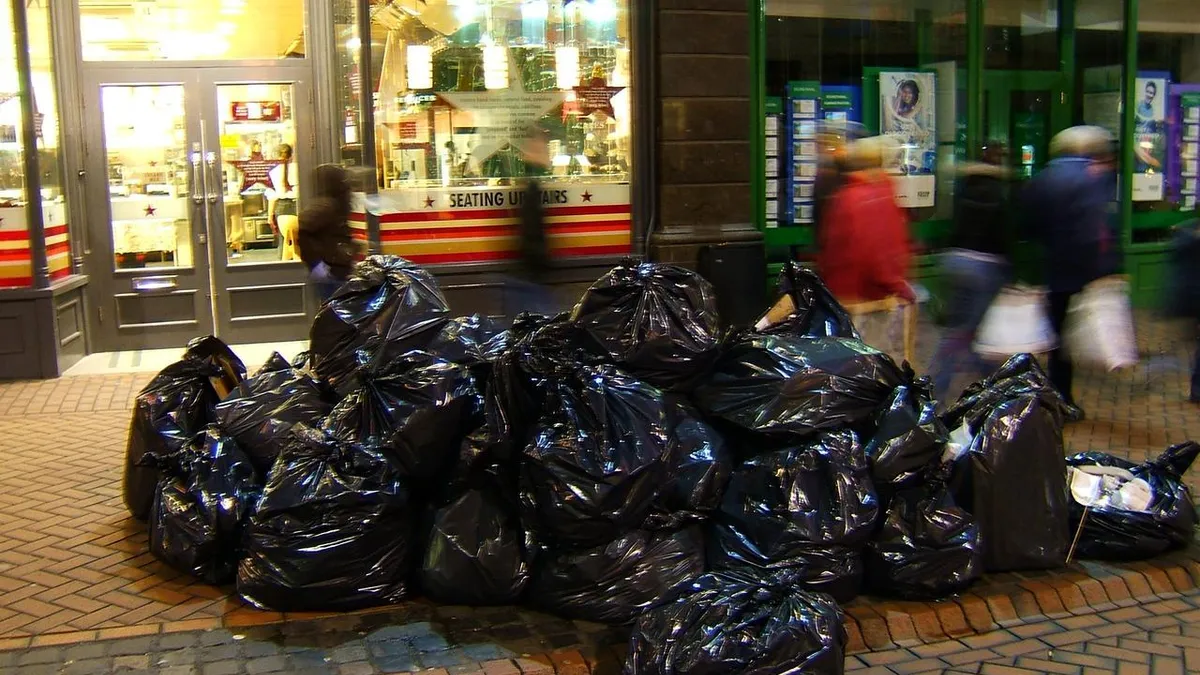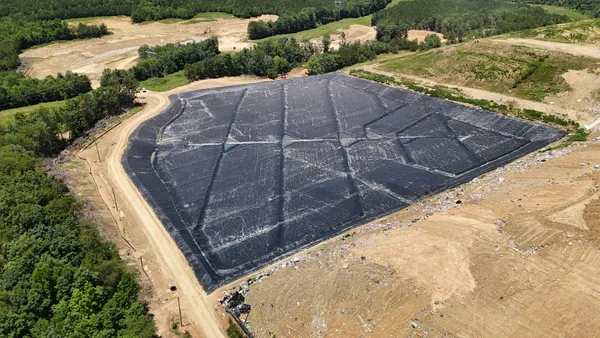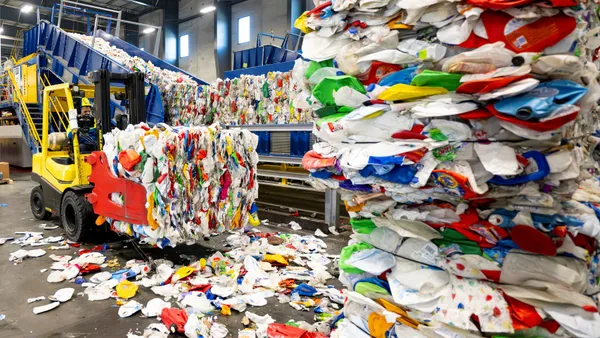Federal data may no longer be the gold standard when it comes to understanding what happens with the nation's waste.
The Environmental Protection Agency's (EPA) statistics on materials management have been a go-to source for decades, but a recent report from the Environmental Research & Education Foundation (EREF) has found the U.S. is managing much more waste than previously thought. The report's authors say this shows the need for more standardized reporting and points to potential ways data could change the industry.
Bryan Staley, EREF's president and CEO, said the original goal was only to compile a list of the nation's recycling facilities — but that soon changed.
"It quickly became apparent that if we were going to get better data we needed to go this route or not do it all," he told Waste Dive.
After two-and-a-half years, help from a dozen interns and phone calls to thousands of waste facilities, EREF’s "Municipal Solid Waste Management in the U.S.: 2010 and 2013" is finally complete.
EREF's headline statistic is that approximately 9,000 facilities handled 347 million tons of municipal solid waste (MSW) in 2013 — as compared to the EPA’s estimate of 254 million tons — yet the report also highlights a number of interesting trends. The roughly 60-page document has information on a decrease in interstate shipments, the increase in composting facilities, the regional differences in waste-to-energy capacity and much more.
The Foundation's bottom-up methodology of aggregating data from specific facilities is similar to an approach used by researchers from Yale University in a paper about landfills that came out last year. Once EREF saw that its data lined up with the Yale study, as well as the state agency data used by BioCycle's biennial "State of Garbage" report, they knew they were on to something.
The EPA's "Advancing Sustainable Materials Management: Facts and Figures" report uses a top-down method that calculates production, imports, exports and estimated product life to determine waste generation. This method generated the often-cited statistics that the average person generates 4.5 pounds of waste per day, while EREF's data shows that number may be closer to 6 pounds per day.
"It's not that the EPA data should go in the trash can," said Staley. "Certainly from a trend analysis standpoint there's a lot of strength in the EPA data because they’ve been doing it since the 1960s."
When asked whether EPA has considered changing its methods due to EREF's findings, a spokesperson from the agency's public affairs office said it hadn’t reviewed the report yet. Though it was noted that the agency has made "significant efforts" to review and update its methodology in recent years. They also pointed to a pilot started in 2007 where eight Southeastern states in Region 4 worked to share a common set of information with each other. This State Measurement Template was launched nationally in 2012 as part of the State Measurement Program which provides data on solid waste, recycling, diversion and sustainable materials management efforts throughout the country.
State standardization
The need for standardized reporting is something that EREF noticed in the process of contacting facilities and analyzing data from various states.
"When you’re comparing state information with different definitions you're confounding your results, you’re not getting a clear picture," said Debra Kantner, EREF's data and policy program manager.
Many states have different reporting requirements for recycling facilities than landfills or waste-to-energy plants which can make this difficult. Some states process more material through standard facilities than others or have different reporting requirements for commercial operations.
The definition of recycling itself can even be widely different between states. For example, Florida includes construction and demolition debris and renewable energy credits in its statewide diversion calculations.
Improving this system will help governments make better decisions about funding, understand the environmental benefits of recycling certain materials in certain areas and plan more strategically in the long-term.
Data demand
As with most things in the waste industry, any kind of major top-down federal overhaul is unlikely. A change in reporting will require state and local governments to decide they want to get on the same page, with organizations such as EREF helping to compile the data.
As more cities move toward "zero waste" goals it will be important to have better ways to compare their progress. More can also be done to collect data on what's happening with commercial recycling, e-waste, plastic film drop-off, food waste diversion and other programs.
One promising sign is the increasing interest in data collection technology and cloud-based analytics, especially for corporate sustainability programs. Kantner predicted that one day this could lead to onboard scales for collection vehicles and more RFID tracking on recycling carts. Staley said this could be as simple as weighing waste on its way out the back door of a store and making that information publicly available.
"A composting facility that is looking for feedstock could really use that information to understand where they might site a facility that could then divert more grocery store waste away from the landfill," he said.
EREF plans to play an even bigger role in helping governments and industry make these types of decisions through better data in the future. The team has far more information available than what they included in the report and is working on new projects to analyze it.
"There are so many data points that we could put out that the industry needs that tie back to essentially this original giant multi-year effort of getting this united tonnage using the same MSW definition," said Kantner.
The organization is currently working on about 25 projects on everything from leachate to school lunch and has seen its profile begin to rise. States and organizations are starting to cite EREF’s data and conversations with EPA employees are ongoing.
Rather than usurp EPA's role as the central provider of MSW statistics, EREF sees itself as working with government agencies and industry players to "raise all ships."
"I think there's kind of an information hole that we’re filling," said Staley. "We just want to provide credible, accurate data."













